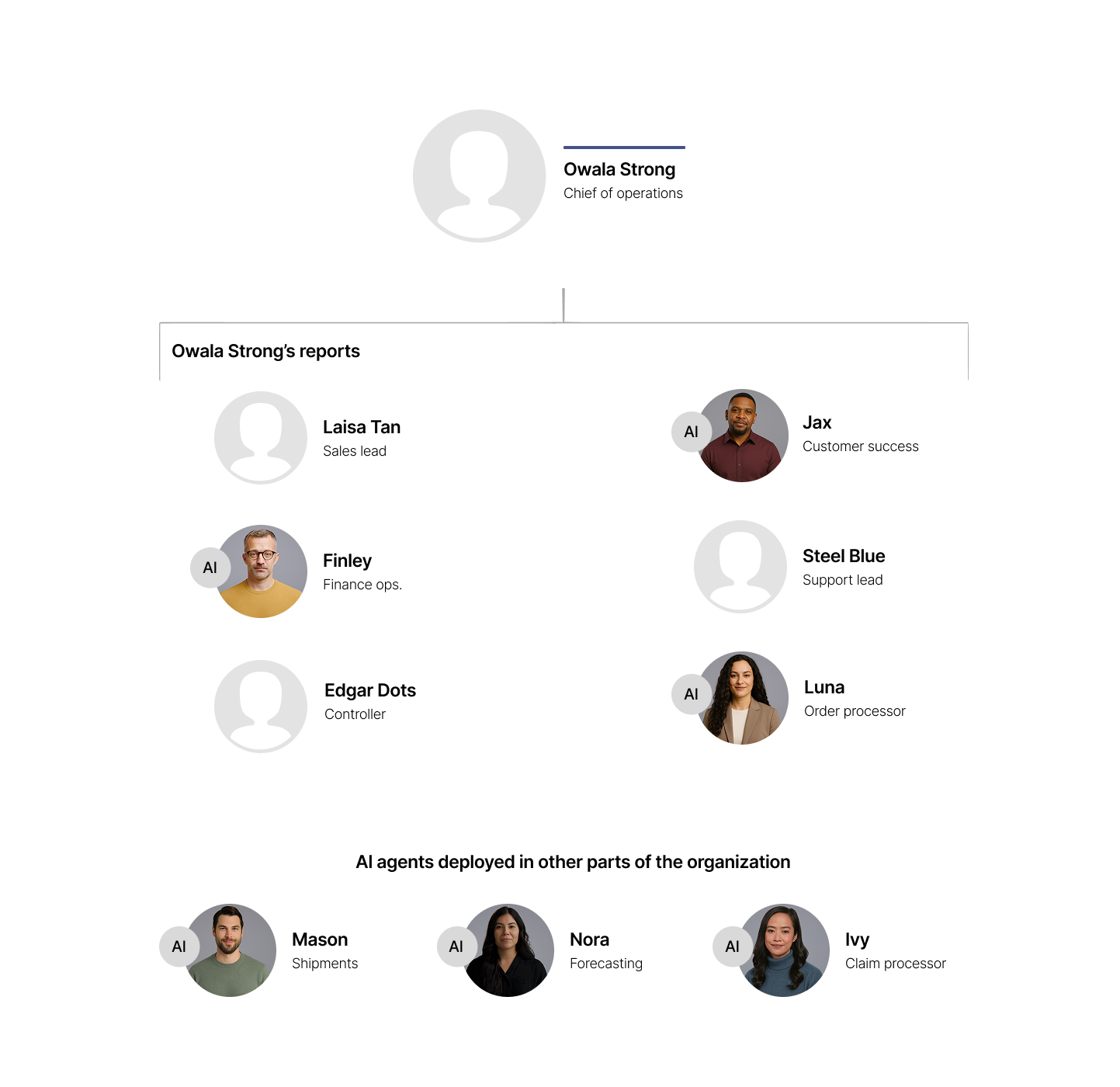The modern org: rethinking how work gets done in the age of AI agents
The modern org: rethinking how work gets done in the age of AI agents

For decades, the org chart has been a symbol of structure and clarity. It tells us who does what, where decisions flow, and how teams interact. But today, that structure is straining under the weight of complexity, scale, and rising expectations. Traditional org charts were never designed for real-time responsiveness, automation, or 24/7 service.
So what happens when you rethink the org chart for a new kind of worker — the AI agent?
From hierarchies to hybrid teams
At HachiAI, we see the future of work not as man versus machine, but as hybrid pods of humans and AI agents collaborating side by side. AI is no longer just a backend tool or a chatbot on the front lines. It is becoming a core part of how work gets done across operations, finance, logistics, customer service, and more.
We’ve moved beyond robotic process automation (RPA). Our AI agents are capable of reasoning, making decisions based on context, and coordinating complex tasks. They are embedded in the workflow, not bolted on.
Imagine an org chart where next to your sales ops lead sits Luna, our AI agent for order processing and system orchestration. Supporting your financial controller is Finley, who handles reporting, reconciliation, and cashflow forecasting. In your customer support team, Jax works tirelessly to triage service requests and escalate the right ones to the right people — or solve them outright.
These agents are more than bots. They have defined responsibilities, collaborate with their human teammates, and deliver measurable outcomes.
The rise of the AI augmented org chart
The traditional org chart shows people and their reporting lines. The AI augmented org chart shows how work actually gets done.

Each of these AI agents is designed to take ownership of repeatable, rules-based work that typically slows teams down. They do it faster, around the clock, and without introducing manual errors.
And just like human team members, they’re specialized:
Some are utility agents that parse emails, extract data, and trigger workflows. Others are domain specialists trained for insurance, logistics, finance, or compliance. A few are cross-functional orchestrators that manage multi-system workflows end to end
What changes when AI joins your org chart?
It’s not just about efficiency. It’s about scale without burnout.
When you integrate AI agents into your teams:
- New hires onboard faster because agents handle the grunt work
- Handoffs between departments become seamless
- Human staff focus on judgment, creativity, and strategy
- You scale without adding 1:1 headcount
In one recent engagement, a telco provider automated their end-to-end order fulfillment process using Jax and Luna. The result? 3x faster processing and near-zero manual intervention.
This is not a pilot. It’s the future.
We’re not speculating about what’s coming. We’re already deploying these AI org charts across industries. From insurance to logistics to non-profits, organizations are redesigning how they work around AI agents.
It’s a shift as fundamental as moving to the cloud — and just as inevitable.
Want to meet your new team members?
We’ve built a team of humanized AI agents that are ready to plug into your business. Each one has a name, a role, and a measurable impact.
Meet Finley, Luna, Mason, Ivy, Jax, Reid and Nora — your new AI-powered coworkers.
Explore our agents and see how your org chart can evolve. Request a demo.